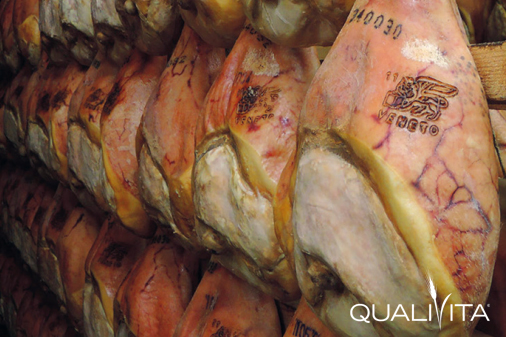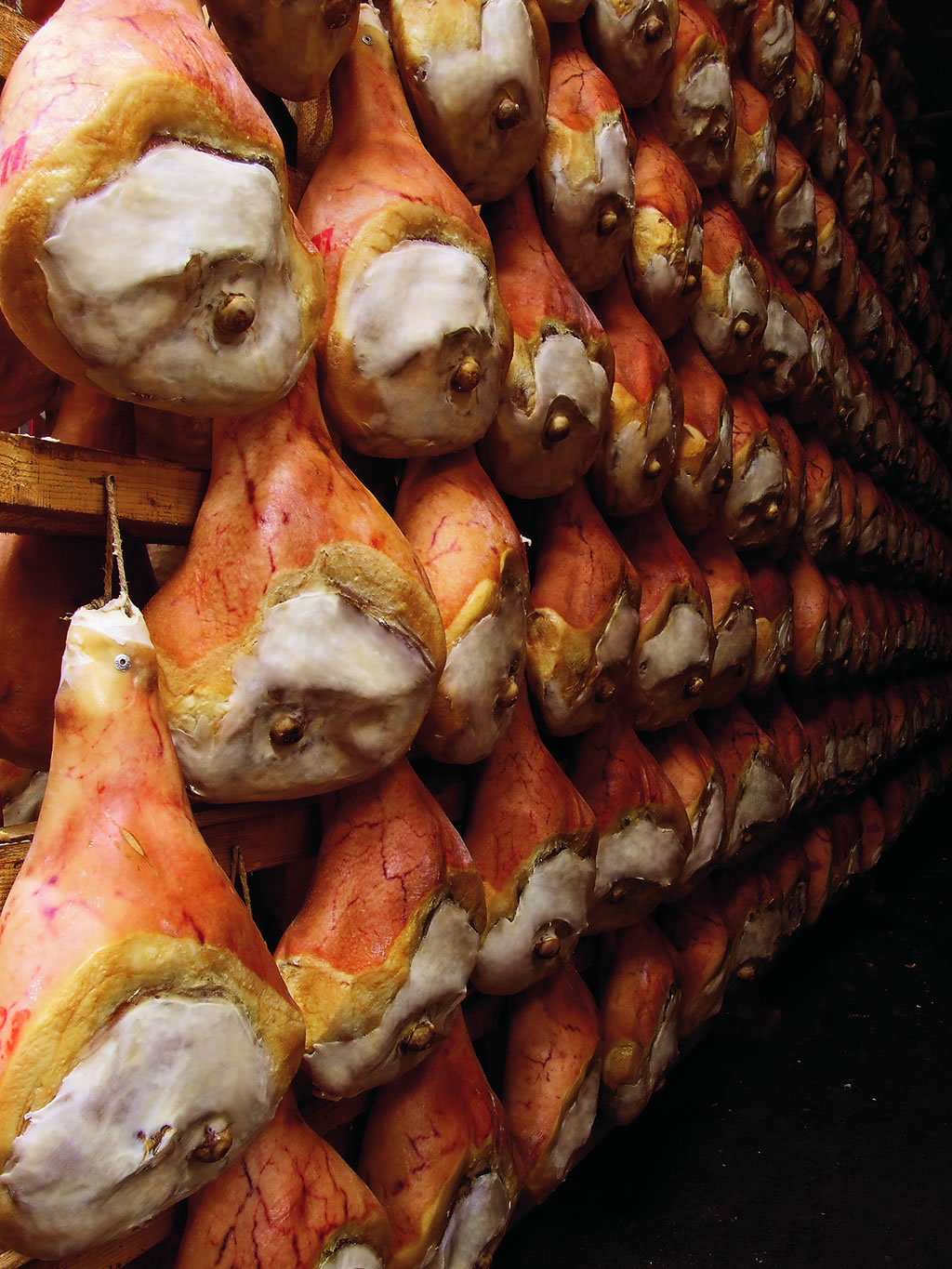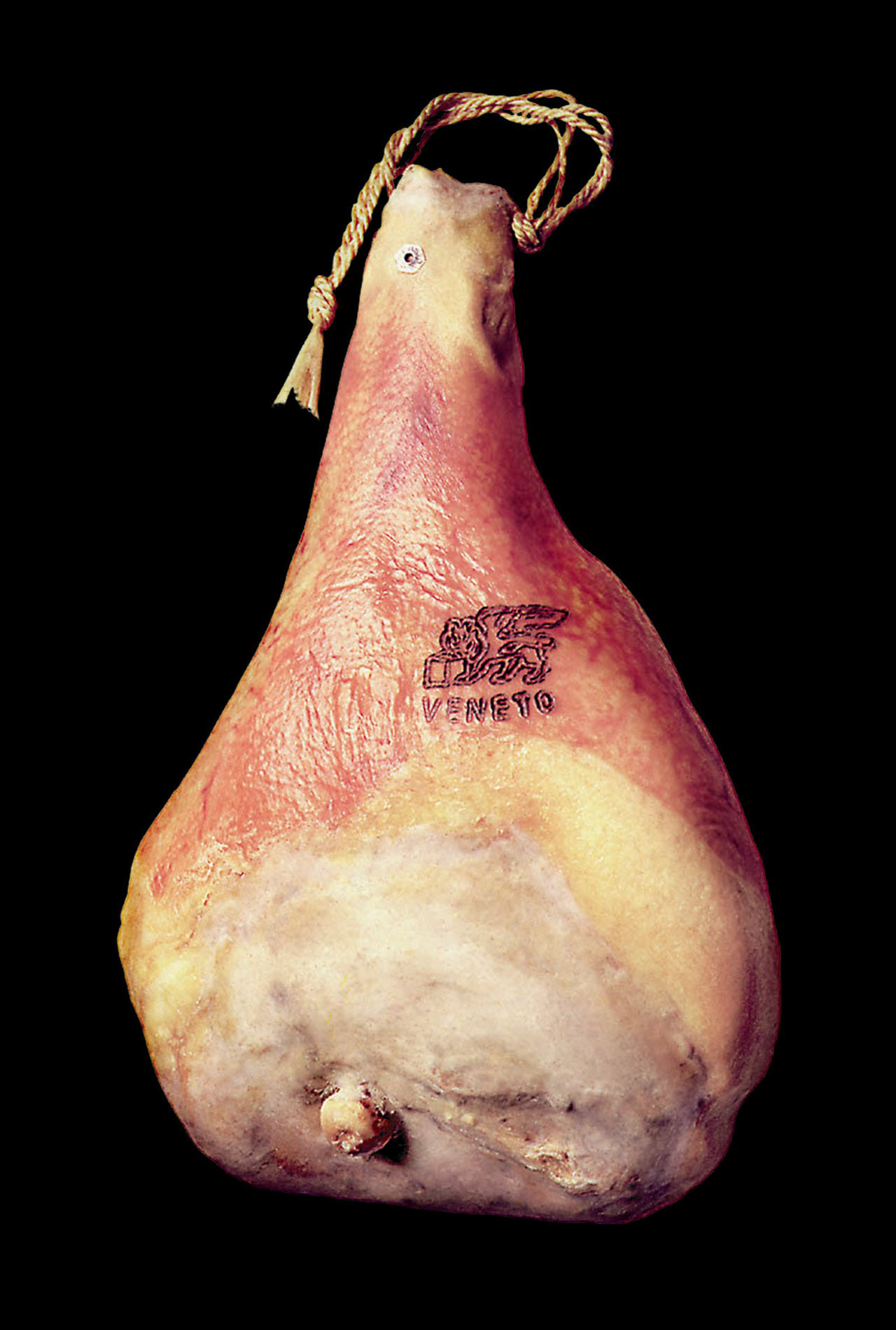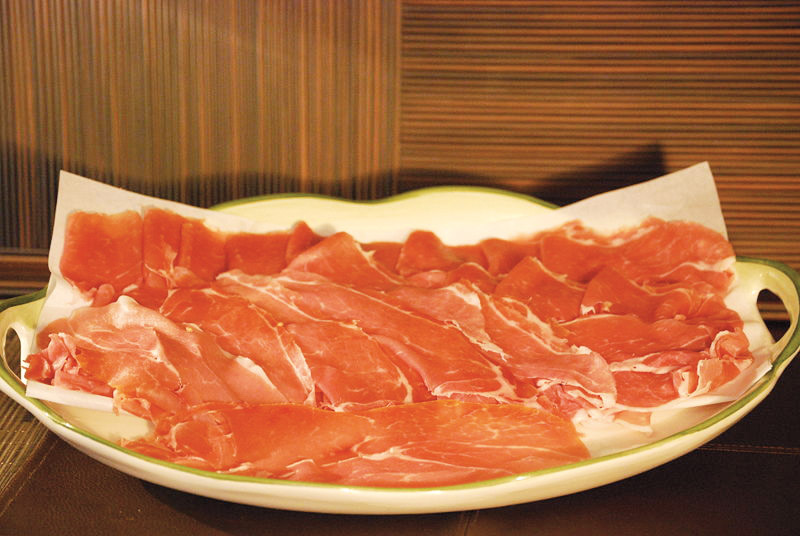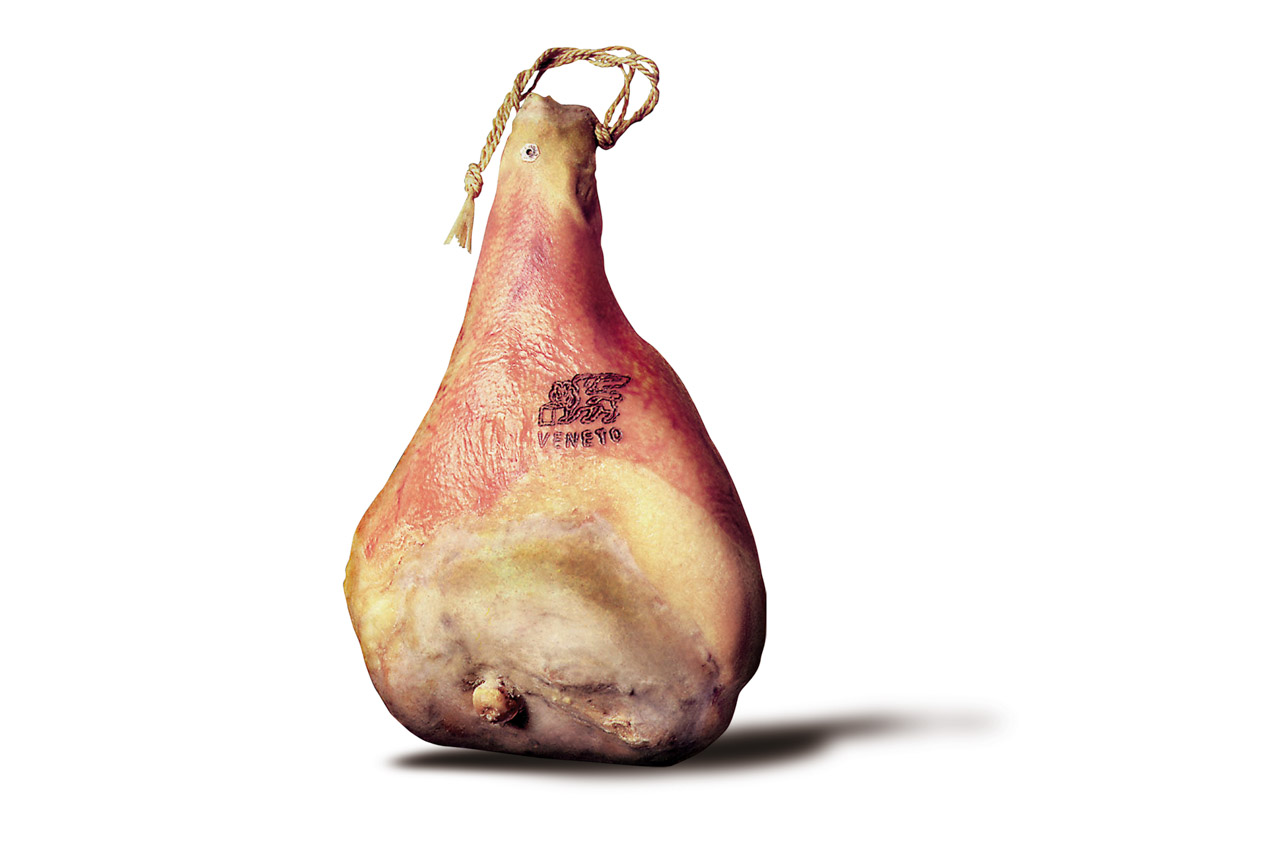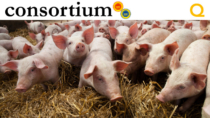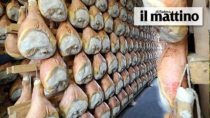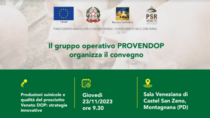Description
Prosciutto Veneto PDO or Prosciutto Veneto Berico-Euganeo PDO is a raw and cured charcuterie product obtained through the processing of fresh legs from heavy pigs belonging to the Italian Large White, Landrace and Duroc breeds, purebred or offspring.
Production Area
The production area of Prosciutto Veneto PDO is within the territory of 15 municipalities on the southern border of the provinces Verona, Vicenza and Padua, in the Veneto region. The pigs used for production must be born, raised and slaughtered in the following regions: Veneto, Lombardy, Emilia-Romagna, Lazio and Umbria.
Production Method
The legs of the pigs destined for production are marked with a tattoo within forty days of their birth. The animals are then put on a specific diet, which ensures that the meat acquires its particular organoleptic and morphological characteristics. The legs are carefully selected and transferred to refrigerated cells for 24 hours, in order to facilitate trimming. The legs are then massaged before being covered with sea salt, the only preservative that is permitted. The length of time the legs remain under the salt is determined by their weight. The expertise of the salter lies in knowing when to remove the legs from the salt, sometime between the tenth and fifteenth day, which also depends on the morphological characteristics and environmental conditions. The ham is then lightly pressed and placed in a controlled environment for 75-100 days, in order for the product to dry and absorb the salt. At the end of this period, the ham is washed, trimmed and dried naturally, before being covered with a paste of cereal flour and pork fat. The curing process can last for 10 to 12 months, depending on the weight, with a minimum of 14 months for legs destined for slicing, and this can be prolonged to 18-24 months to bring out the full flavour and fragrance of the ham.
Appearance and Flavour
Prosciutto Veneto PDO has a natural semi-pressed shape and no trotter. Its weight at the end of the curing process varies from 8-11 kg. The meat is pink in colour, interspersed with very faint marbling, with pure white fatty parts; it is tender and fragrant, with a delicate sweet aroma.
History
The origins of Prosciutto Veneto PDO date back to the Celtic custom of preserving meat with salt, which was successively perfected in the Roman period. In fact, pig rearing has always characterised Venetian agriculture. After the Unification of Italy, Venetian ham became a less salty raw product, in order to compete with the French competition. The results can be seen in the many awards given to the companies which today are members of the Consortium, such as the one signed by Quintino Sella at the Milan National Exposition in 1881.
Gastronomy
Whole Prosciutto Veneto PDO should be kept in a cool dry place. The deboned and packaged product must be kept in the refrigerator at a temperature between 0°C and 10°C. Thanks to its delicate, sweet and fragrant aroma, low salt and fat content, and first-class proteins, Prosciutto Veneto PDO is an ideal ingredient for starters or side dishes, but also first and second courses like potato sandwich with Casatella Trevigiana PDO cheese and Prosciutto Veneto PDO; bread, artichoke and Prosciutto Veneto PDO millefeuille; or oven-baked Radicchio Rosso di Treviso PGI with Prosciutto Veneto PDO.
Marketing
The product is marketed as Prosciutto Veneto PDO or Prosciutto Veneto Berico-Euganeo PDO. It is sold whole, vacuum-packed boned or deboned, in pieces or pre-sliced, and must always display the Lion of Saint Mark logo, symbol of the PDO certification.
Distinctive Features
The distinguishing and well-known aromatic traits of Prosciutto Veneto PDO are given to the alternation of the seasons and the dry, humid climate that is typical of the narrow plain between the Berici Mountains and the Euganean Hills.





